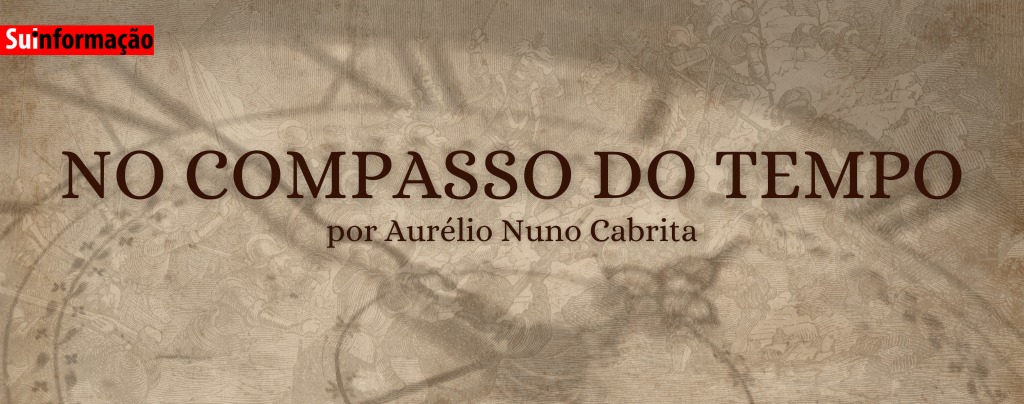My thesis is relatively easy to state. The so-called Great Transitions – climate and energy, ecological and food, demographic and migration, technological and digital, socioeconomic and socio-labor, geopolitical and security – due to the impressive and devastating impacts they cause on the global landscape, on productive systems and on the lives of populations, force us to look at territories with a more differentiated level of positive discrimination, a scale of programming with greater added value and planning and executive action more in line with the demands of an integrated approach to the development of low-density areas (ABD) .
In this context, concepts such as landscape-system, landscape mosaic, bio-region and agroecology, due to their high circularity and systemic interdependence, can introduce a dynamic of positive reciprocity between the productive economy and the creative economy in the territory of low-density areas ( ABD), if, to this end, we are able to create an appropriate territorial scale, an operating system and a specific actor-network that, through the application of an integrated territorial development program, boost a more intensive and lasting network and agglomeration economy and, thus, can reverse or reverse the vicious cycle of desertification and depopulation of the ABD. Let's look at the main topics of this integrated approach based on the active principle of networks and an ecological economy of creative reciprocity.
Firstly, the primacy of the circular concepts of landscape-system and bio-region. These concepts ensure positive reciprocity between the biology and ecology of landscape units, ecosystems and ecosystem services and the corresponding production system through a series of sustainability metrics, certification and territorial marks that guarantee the perpetuity of resources and the its careful management. Let's say that agrosystems are progressively converted into agroecosystems.
Secondly, changing the scale and territorial scope of operations is essential. In other words, it is necessary to make the design and scale of the landscape system and bio-region compatible, as far as possible, with the already existing political-administrative delimitation.
What is at stake is the creation of sufficiently comprehensive network territories and the formation of a network actor with sufficient powers, competencies and resources to absorb and mitigate the external effects of major transitions and integrate into a single intervention program the different policy measures that are of application in the territory of the landscape system and the bio-region.
The conventional, more vertical, sectoral and individual approach is, in this way, associated with integrated territorial and regional development operations.
Thirdly, without smart communities (C), digital platforms (P) and collaborative networks (R) the operating system does not work. In other words, without enlightened associations and leaders, effective digital literacy programs and strong inter-associative cooperation, we do not have a collaborative public space where we can mobilize the strength of the weak ties of online communities for the good functioning of collaborative networks.
In other words, the conditions will not be met to design a kind of ABD wiki economy.
Fourthly, the countless external effects of major transitions – contextual costs, formalities costs, opportunity costs, stealth and moral hazard behaviors – and the profusion of public policy measures require a transversal and integrated view of the territory, i.e. , call for an actor-network with coordination and regulation functions for all executive action on the ground that operates with smart communities, digital platforms and collaborative networks.
Fifthly, the European Green Deal and the Common Agricultural Policy Specific Programs (PEPAC) are an excellent opportunity to decentralize and bring together many European and national policy measures and to converge these measures at territorial scales closer to the real needs of an economy agroecological and circular of low density and intensity.
Sixthly, the recent transfers of responsibilities and competencies to the Regional Coordination and Development Commissions (CCDR) and the Intermunicipal Communities (CIM) are also a unique opportunity to include in the Regional Operational Programs (POR) a special differentiation for the ABD, in order to achieve an agroecology adjusted to each sub-region and with a view to supporting regional networks of local markets that support family farming in bio-regions,
Final Notes
Ecological economics is a comprehensive approach to the development of territories and can be defined as the set of virtuous links that articulate the ecology of the landscape with the economy of productive systems.
These links consider heritage and landscape (1), relevant applications of science and technology (2), local productive systems (3), human and social capital and creative talent (4), an economy of distinctive signs and of territorial marks (5).
Higher education institutions located in low-density areas, especially the agricultural higher schools of polytechnic institutes, can function as the pivot of future bio-regions and their complex of natural parks and geoparks, natural amenities, integrated landscape management areas, village condominiums, forest intervention zones, and use ecological economics to reconfigure the landscape system, the corresponding landscape units and the landscape mosaics of these territories.
The asymmetric effects and collateral damage of major transitions and in particular climate, ecological and energy changes fully justify finding the appropriate compromise between ecology and economy, even more so than small adjustments, mitigation and adaptation, even Great transformations do not materialize all at once.
Therefore, the policy of small steps and consistent incremental innovation across time and space is important. And, to this extent, low-density areas, due to the preventive state in which they are found, are an excellent framework for the next applications of the ecological economy.
With the sustainable development goals (SDGs) as the main guide, the alignment enshrines biodiversity and ecosystem services (1), agroecology, diets and food security (2) peri-urban agroecology (3), the economy of agri-food innovation and new sustainability metrics (4), agroecology and circular economy (5), family agroecology and regional networks of local markets (6), identities, local cultures, traditional arts and crafts (7) , the ethics of the economy of common goods, public health, well-being and social solidarity (8).
This is the ecological economy, the compromise between nature and culture, ecology and the economy.
Author António Covas is a Retired Full Professor at the University of Algarve



















Comments